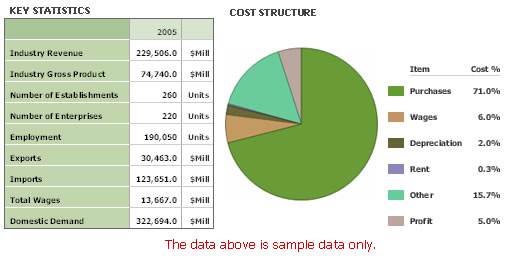Hog and Pig Farmingin USA
USA Market Research and Industry Report
15 June 2007
Industry Code : 11221
This industry comprises establishments primarily engaged in raising hogs and pigs. These establishments may include farming activities, such as breeding, farrowing, and the raising of weanling pigs, feeder pigs, or market size hogs (Source: NAICS). The Hog and Pig Farming industry is not responsible for the production of processed or packaged meat. This industry ends at the point when the livestock is sold or transferred off the farm. Pigs and Hogs are common names for members of the Suidae family of animals. They have cloven hooves, short legs and a snout used for digging. The term ‘pig’ usually refers to the domestic mammal, Sus scrofa domesticus when it is young or small. ‘Hog’ is the name typically given to domesticated pigs that weigh more than 120 pounds.
The major products and services in this industry are:
|
The primary activities of this industry are:
| - | Farrow-to-finish operations |
| - | Feeder pig farming |
| - | Hog Feedlots (except stockyards for transportation) |
| - | Hog and pig (including breeding, farrowing, nursery, and finishing activities) farms |
| - | Pig farming |
| - | Weaning pig operations | |
IBISWorld research reports contain trend analysis, statistics, market size information, industry growth rates as well as market share of competitors.
Major market segments are identified and also those forces affecting demand and supply within the industry. Performance analysis includes emerging industry trends as well as recent results and performance of each key company. Drawing on the depth of information IBISWorld also provides 5 year forecasts for each industry.
Each comprehensive study also examines details such as the barriers to entry, operating cost structure, technology & systems and domestic & international markets. Tables and statistics include: Industry revenue, exports, imports, wages and number of companies in the industry, Industry growth and geographic regional data.
Each comprehensive study also examines details such as the barriers to entry, operating cost structure (including averages), technology & systems and domestic & international markets. Tables and statistics include: Industry revenue, exports, imports, wages and number of companies in the industry, Industry growth and geographic location.






